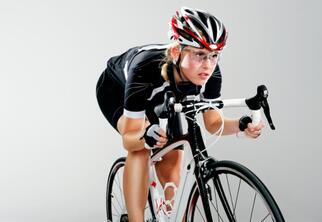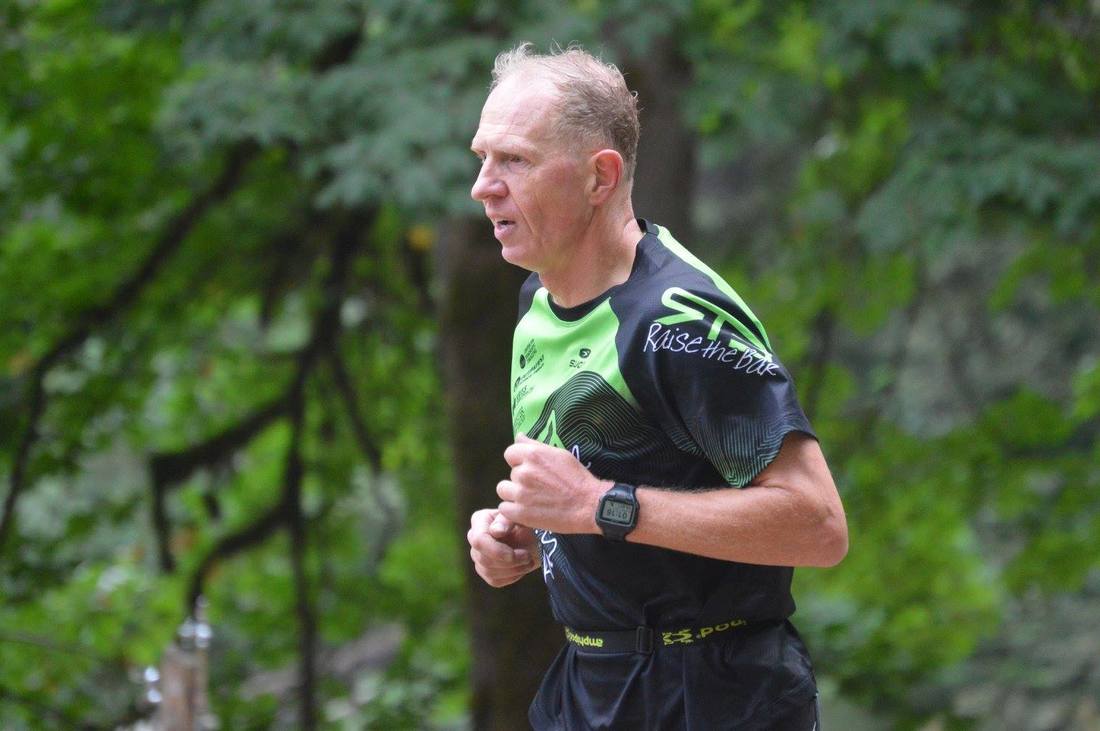|
By Holly Pennington PT, DPT/Outpatient Physical Therapy RTB Sponsor  You can’t be in the world of triathlons long before you hear about the various effects cycling can have on the male pelvic floor: testicular pain, infertility, genital numbness to name a few. But what about females? There is less information out there about cycling and the female pelvic floor because women have not been studied as much, not because we are less prone to such problems. Prolonged stress in the pelvic region, whether it comes in the form of sustained pressure (cycling) or impact (running), affects the muscles that support our bladder and other vital organs. First, let’s give these important muscles a definition they deserve - they are much more than our “Kegel” muscles. The pelvic floor is the layer of muscles that stretch front to back between the pubic bone and tailbone, and side to side between the sitting bones. In the healthy state, these muscles are firm and thick. They function to support the bowel, bladder and uterus as well as allow for passage of urine and feces. When pelvic floor muscles become stretched out or weakened – a common effect of pregnancy, childbirth and certain types of exercise – women often experience incontinence, pelvic pain, or pelvic organ prolapse. In a recent study of 311 female triathletes, 1 in 3 women reported symptoms of pelvic floor disorders. Stress urinary incontinence (urinary leakage with physical activity), fecal incontinence and pelvic girdle pain were the most common conditions. Researchers have also demonstrated decreased pelvic region sensation in cyclists compared to runners who did not cycle. While the specific effect of cycling on the female pelvic floor is not well understood, there are steps you can take to protect these important muscles. Start with your saddle. It’s an obvious, but not easy, place to start. A 2016 clinical study concluded that wider, traditional shaped saddles cause less pressure in the female pelvic area than cut-out saddles. This is something to keep in mind when you shop for the perfect bike seat. However, your comfort and preference matter more than research studies, magazine articles or expert advice. And, the saddle is just one of many links between cycling and pelvic floor problems. Don’t stop with your saddle. What happens above and below the seat could be just as important as the shape and size of your saddle. Research shows that handlebars positioned below seat height are associated with increased numbness in the pelvic floor compared to handlebars at or above seat height. Just like every part on your bike influences how well it works, every part of your body affects the others. Spend the time and money on a professional bike fit – your whole body will thank you! Understand what is normal. Urinary leakage is common, but it is not normal. As many as half of elite athletes experience urine loss during physical activity, but only very few - 3.3% - discuss it with their healthcare providers. Women’s health physical therapists like Alexis specialize in the rehabilitation of the pelvic floor muscles, utilizing equipment such as biofeedback and electrical stimulation to resolve symptoms of incontinence, pain and prolapse. If you are a female triathlete experiencing pelvic floor symptoms, you are not alone. You can take charge of your bike and your body. And professionals like the women’s health specialists at Outpatient Physical Therapy are out there eager to help you move from “common” to “normal.” Take charge of your pelvic floor muscles by consulting with a Board Certified Women’s Health Physical Therapist at Outpatient Physical Therapy: www.outpatientpt.com References: Johnny Yi, Sandi Tenfelde, Dina Tell, Cynthia Brincat, Colleen Fitzgerald. Triathlete Risk of Pelvic Floor Disorders, Pelvic Girdle Pain, and Female Athlete Triad. Female Pelvic Medicine & Reconstructive Surgery (2016). Thyssen, H., Clevin, L., Olesen, S. et al. Urinary Incontinence in Elite Female Athletes and Dancers, Int Urogynecol J (2002) 13: 15. Connell, K., & Guess, M. Genital sensation and sexual function in women bicyclists and runners: are your feet safer than your seat? Journal of Sexual Medicine, (2016) 3:6, 1018-1027.
0 Comments
Your comment will be posted after it is approved.
Leave a Reply. |
Raise the BarRace reports, upcoming events, news, and more, from RTB. Archives
September 2023
|

 RSS Feed
RSS Feed




